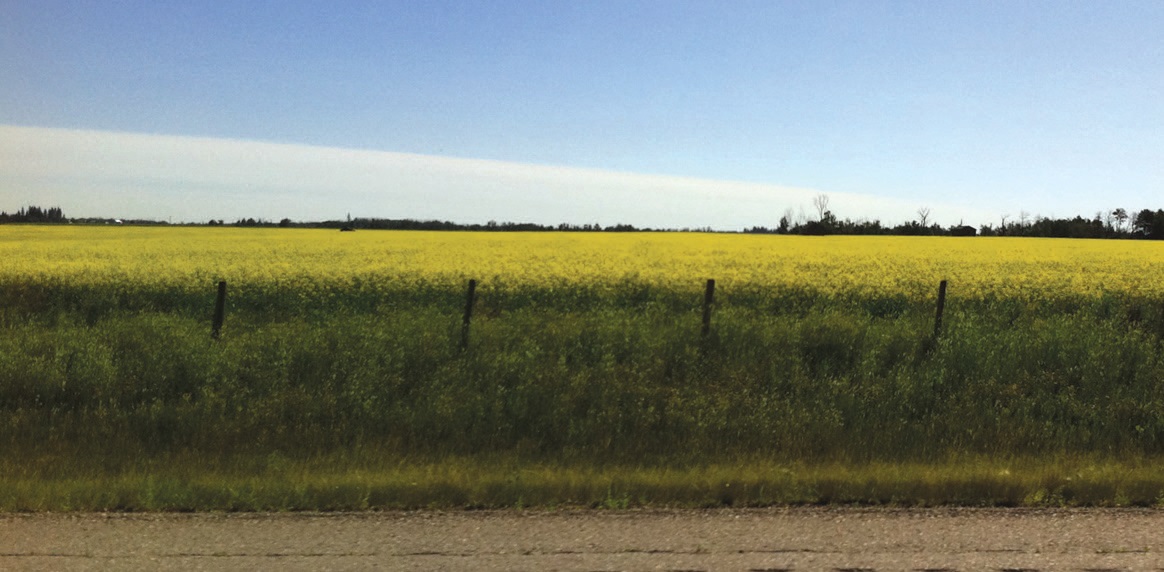Creative stumbles
Evan Zabawski | TLT From the Editor October 2011
To come up with a column topic, sometimes I just look out the window.

‘That’s canola, not dandelions.’
GIVEN THE ECLECTIC TOPICS I have written about, it should come as no surprise that I am asked, “How do you think up a new topic each month?” I try to take that as a compliment, but in my head I sometimes hear that question paraphrased as, “Where in the world do your weird ideas come from?” Either way, the answer is that sometimes I pick my topics and sometimes they pick me.
When I write something of an etymological or historical nature, like the origin and correct spelling of aluminum, or how India’s independence arose from a poorly chosen lubricant, I probably picked that topic because I was interested in it myself.
But sometimes a topic can almost reach out and bite me on the nose, and this month is no exception. While driving through the prairies this summer, my four-year-old daughter commented that she could see a lot of dandelions out her window. When my wife told her it was canola and not dandelions, she then asked, “What’s canola?” My wife told her it was a plant that we use to make oil. My daughter naturally asked, “What do you use canola oil for?”
Instead of immediately answering that question, my wife turned to me and said, “Next month’s TLT column.” I went along with the joke at first, since conversations have been known to inspire a future column, but I was hesitant to do another pro-product column so soon after my August column on citrus-based solvents. I decided to let it go and let it mature for a later date, but that was not to be.
Recently, a national newspaper chose to run a cover story in its food and wine section on, you guessed it, canola. Seeing this was still not enough to change my mind from my intended alternate topic. For that I had to read the article. It alluded that there was controversy over the origin of the name canola. Now I knew I had a topic.
For those of you who don’t know, canola is a form of rapeseed. Rapeseed oil has slightly less monounsaturated fatty acids than olive oil, however, the form of these acids is erucic acid, which is known to cause cancer and heart problems like fibrotic lesions. In the late 1970s, a form of genetically modified rapeseed was created in Canada using seed splitting, and its oil contained low erucic acid and high oleic acid. It was named LEAR oil for Low Erucic-Acid Rapeseed.
It seemed naming oil “lear” was no more popular than “rape” (from
rapum, Latin for turnip). In 1978 industry settled on “canola” for “Canadian oil.” Some interpretations have said that canola is an acronym for “Canada oil, low acid” (as I had previously been led to believe), while others said it was influenced by Mazola Corn Oil from the New World maize. Interestingly, while the name crosses the border in the U.S., it does not make it across the ocean to Europe where it is called “rape oil” or, even worse for the cold-pressed variety, “virgin rape oil.”
Whatever name it falls under, it is an excellent product. The FDA issued a qualified health claim that its low saturated-fat content reduces the risk of heart disease. Not bad, considering pure rapeseed oil has the opposite effect. Canola oil also provides a healthy dose of omega-3s, making it healthier than even olive oil.
So there you have it, sometimes a topic haunts me until I am compelled to share it with you. But if you have a topic you’d like to see here, send me a note and just maybe I can credit you for my next weird column.
 Evan Zabawski, CLS, is the senior reliability specialist for Fluid Life in Edmonton, Alberta, Canada. You can reach him at evan.zabawski@fluidlife.com
Evan Zabawski, CLS, is the senior reliability specialist for Fluid Life in Edmonton, Alberta, Canada. You can reach him at evan.zabawski@fluidlife.com.